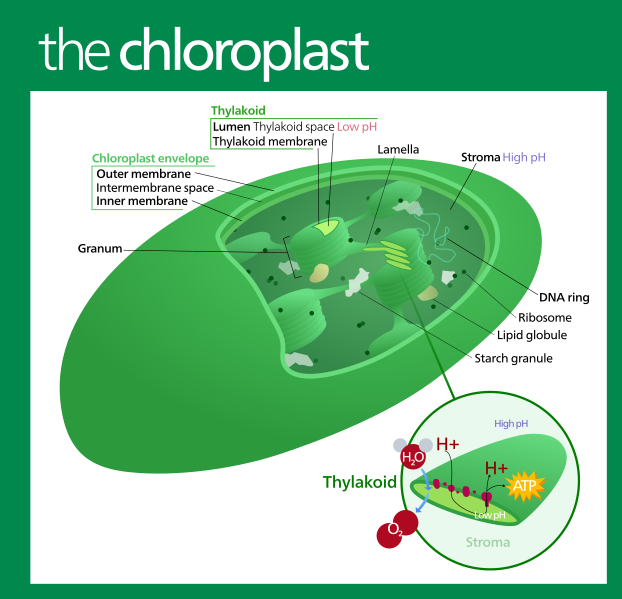The simplest way to understand what photosynthesis is, would be to know that it refers to the process of producing and releasing oxygen in the air. It is a process performed by the plants to produce their own food, and it requires direct sunlight, carbon-dioxide and water (H2O). In the process of photosynthesis, the plants decompose the molecules of hydrogen and carbon-dioxide into hydrogen, carbon and oxygen to produce glucose which forms the source of their energy, growth and food. This involves the conversion of stored energy of the sunlight, water and carbon-dioxide into glucose which is an organic compound and release oxygen in the process.
Products of Photosynthesis
The primary product of photosynthesis is glucose which is the source of carbohydrates like cellulose, starches etc. It also produces fats, proteins, water soluble sugars such as maltose and sucrose. The plants depend on this glucose for their growth and energy.
All the living creatures on the earth depend on fats, proteins and carbohydrates to derive their basic source of energy and thus have a direct dependence on this process for their survival.
Photosynthesis and Respiration
The importance of photosynthesis can be understood with respect to our breathing process. The breathing process keeps us alive and photosynthesis provides us oxygen to breathe in.
Both the processes are inter-related and serve one another. While photosynthesis requires carbon-dioxide and releases oxygen to produce glucose, respiration needs oxygen while inhaling and releases carbon-dioxide while exhaling.
Photosynthesis happens during the day time when the sun shines because the plants require sunlight to produce energy. On the other hand respiration happens all the time as long as a living creature is alive.
However, unlike other living creatures, the plants breathe once in a day. During night, when there is no sunlight, the stomata (pores through which sunlight and carbon-dioxide enter the leaves) are closed and the leaves breathe releasing carbon-dioxide in the air.
Photosynthesis and Environment
The level of carbon-dioxide in the environment largely depends on the process of photosynthesis, which in turn, depends on the number of plants and trees we have. Excessive increase or decrease in the level of carbon-dioxide can bring forth disastrous results on the planet earth.
Industrial revolutions and technical progress have led to too many factories, production houses, buildings, roads etc thereby increasing the use of fuel and release of industrial waste and carbon-dioxide which can be very harmful for the environment.
Just the way, an increase in the carbon-dioxide level may harm the environment; similarly decrease in the level may cause the planet to freeze as CO2 helps in keeping our planet warm and live-able. Photosynthesis helps in maintaining the balance of the carbon-dioxide level in nature by taking in CO2 in the day time (and simultaneously supplying oxygen for other living beings) and breathing it out in the night.
Photosynthesis and Life
Photosynthesis is directly related to the life and survival of all the other living creatures on earth. It not just supplies oxygen without which breathing and being alive would be difficult, but it also supplies food and energy to all.
Among all the living organisms on planet earth only plants are capable of producing their own food and deriving energy from it. No other living creature can produce their food and thus, depend on plants or other creatures which feed on plants to survive. Therefore, by producing energy the plants supply all the necessary nutrients and energy directly and/or indirectly to the other living creatures. The production of this energy is possible through photosynthesis.
Going by all the above the facts, it is evident how photosynthesis plays a vital role in regulating the life cycle on earth. Now you may realize its importance every time you breathe in and out and take a look at the plants at your backyard or neighborhood or front garden. The sunlight, water and the plants work together to supply the raw source of energy to us and help us breathe in oxygen to live on. Life without photosynthesis, would, thus be impossible



